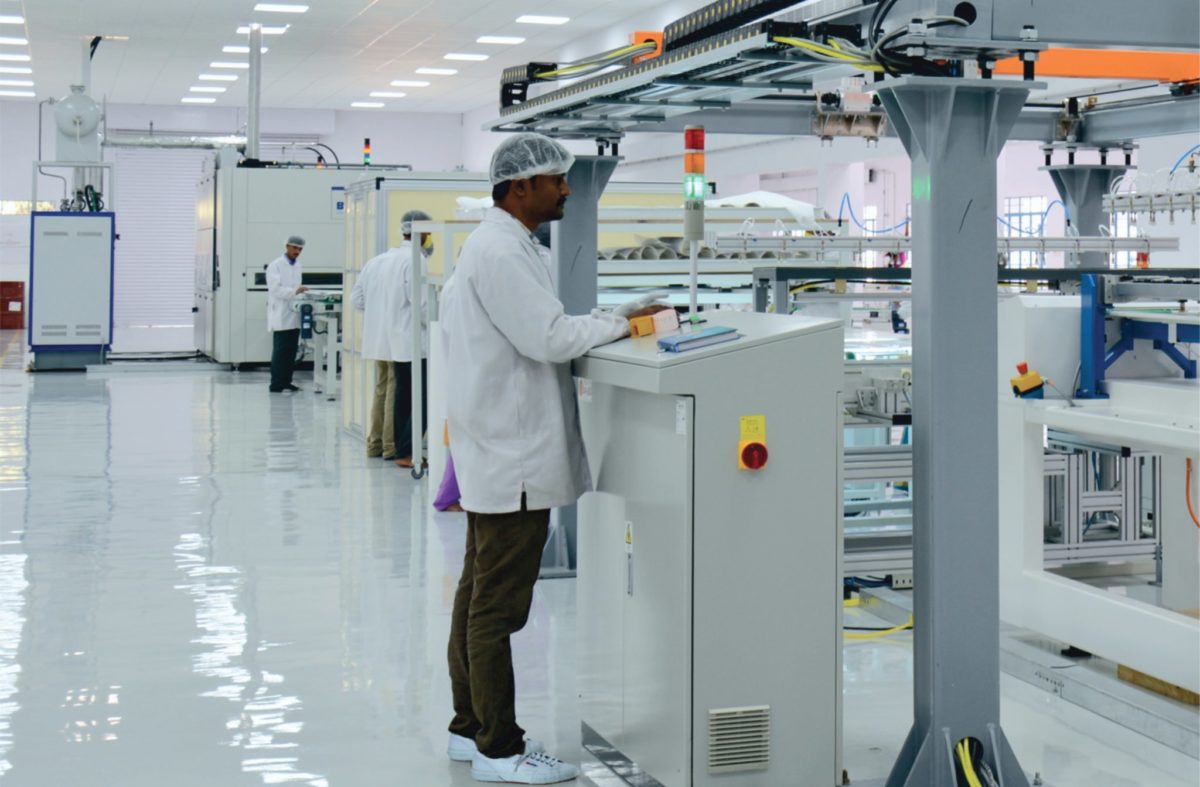From pv magazine India
India’s Ministry of New and Renewable Energy (MNRE) said this week that it has developed new guidelines for its production-linked incentive (PLI) scheme, which aims to achieve gigawatt-scale production of high-efficiency solar modules.
The scheme, which provides funding over a five-year period, has been approved by the president of India. The MNRE will implement it through the Indian Renewable Energy Development Agency (IREDA).
IREDA will have the right to inspect the manufacturing units and offices of applicants and will be able to call upon the National Institute of Solar Energy for help in determining the efficiency and temperature coefficients of modules manufactured by applicants for the incentive. If required, the MNRE will also be able to designate National Accreditation Board for Testing and Calibration Laboratories-accredited labs for measurements.
Selection criteria
Beneficiaries of the PLI scheme will be selected through a bidding process after applicants are shortlisted, based on parameters such as their proposed manufacturing capacity and module performance. Shortlisted applicants will lodge bids based on the level of PLI funding they will require for five years after their planned factories are commissioned.
Preference will be given to fully integrated manufacturing plans, whether based on silicon, thin-film or other technologies. The production of cells, as well as modules, is the minimum scale of integration required to be shortlisted, and a minimum annual production capacity of 1 GW for each step of the supply chain will also be necessary.
The modules must offer minimum efficiency ratings of 19.5%, with a Pmax temperature coefficient greater than -0.3% per degree Celsius, or a minimum module efficiency of 20% with a Pmax temperature coefficient equal to, or better than, -0.4% per degree Celsius.
Capacity allocations
Successful applicants to the PLI scheme will receive a maximum incentive tied to 2 GW of annual production capacity, or half of the planned output of their facility – whichever is lower. That cap ensures that at least three solar manufacturers can benefit from the funds.
PLI cash will be paid out based on the actual production and sales of modules. If a manufacturer sells more products than the production line capacity they bid for, the state funding will be limited to the latter figure. If a successful applicant falls short of the integration level or manufacturing capacity they applied for, no incentives will be paid until the shortfall is addressed.
The incentive will be tapered down over the course of the five-year disbursement period. The first year will pay out the equivalent of 1.4 times an annual reference amount, while the second year will offer 1.2 times the base amount. The third year will be the standard baseline figure, while the fourth and fifth years will be a fraction of that amount.
This content is protected by copyright and may not be reused. If you want to cooperate with us and would like to reuse some of our content, please contact: editors@pv-magazine.com.




1 comment
By submitting this form you agree to pv magazine using your data for the purposes of publishing your comment.
Your personal data will only be disclosed or otherwise transmitted to third parties for the purposes of spam filtering or if this is necessary for technical maintenance of the website. Any other transfer to third parties will not take place unless this is justified on the basis of applicable data protection regulations or if pv magazine is legally obliged to do so.
You may revoke this consent at any time with effect for the future, in which case your personal data will be deleted immediately. Otherwise, your data will be deleted if pv magazine has processed your request or the purpose of data storage is fulfilled.
Further information on data privacy can be found in our Data Protection Policy.